Phlebectomy
Medically reviewed by Drugs.com. Last updated on Aug 4, 2025.
Phlebectomy is a procedure to remove varicose veins close to the surface of your skin. You will be able to get up and walk around right after the procedure. You will be able to go home the same day.
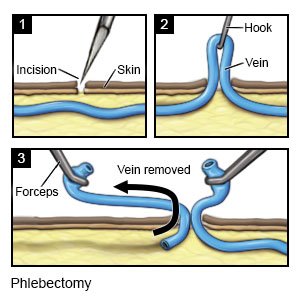 |
DISCHARGE INSTRUCTIONS:
Seek care immediately if:
- Your arm or leg feels warm, tender, and painful. It may look swollen and red.
- Your glue or tape comes apart.
- Blood soaks through your dressing.
Call your doctor if:
- You have new or worsening bruising near the procedure area.
- Your skin becomes red or itchy, or you develop sores near the procedure area.
- You have questions or concerns about your condition or care.
Related medications
Medicines:
You may need any of the following:
- NSAIDs , such as ibuprofen, help decrease swelling, pain, and fever. NSAIDs can cause stomach bleeding or kidney problems in certain people. If you take blood thinner medicine, always ask your healthcare provider if NSAIDs are safe for you. Always read the medicine label and follow directions.
- Acetaminophen decreases pain and fever. It is available without a doctor's order. Ask how much to take and how often to take it. Follow directions. Read the labels of all other medicines you are using to see if they also contain acetaminophen, or ask your doctor or pharmacist. Acetaminophen can cause liver damage if not taken correctly.
- Take your medicine as directed. Contact your healthcare provider if you think your medicine is not helping or if you have side effects. Tell your provider if you are allergic to any medicine. Keep a list of the medicines, vitamins, and herbs you take. Include the amounts, and when and why you take them. Bring the list or the pill bottles to follow-up visits. Carry your medicine list with you in case of an emergency.
Self-care:
- Wear pressure stockings as directed. The stockings are tight and put pressure on your legs. This improves blood flow and helps prevent clots. You may need to wear these for up to 2 weeks after your procedure.
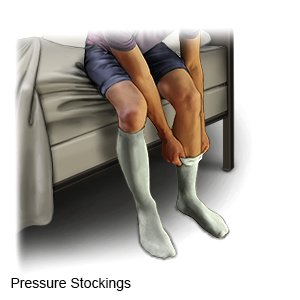
- Exercise regularly to help increase your blood flow. Walking is a good low-impact exercise. Talk to your healthcare provider about the best exercise plan for you.
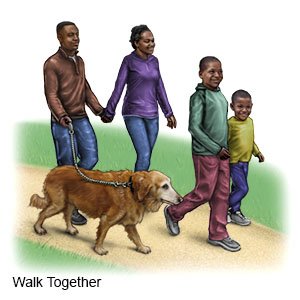
- Apply ice 24 hours after your procedure. Use an ice pack, or put crushed ice in a plastic bag. Cover the bag with a towel before placing it on your skin. Apply the ice to your procedure area for 15 to 20 minutes every hour or as directed. Ice helps prevent tissue damage and decreases swelling and pain.
- Elevate the procedure area above the level of your heart as often as you can. This will help decrease swelling and pain. Prop your arm or leg on pillows or blankets to keep it elevated comfortably.
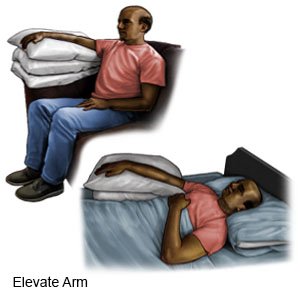
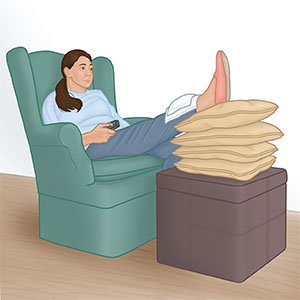
- Care for the procedure area as directed. Do not get the area wet until your provider says it is okay. When it is okay to bathe, do not scrub the area. Gently pat the area dry. Do not put powders or lotions over your incision. Check the area every day for signs of infection, such as swelling, redness, or pus.
- Do not smoke. Nicotine and other chemicals in cigarettes and cigars can cause blood vessel damage and delay healing. Ask your provider for information if you currently smoke and need help to quit. E-cigarettes or smokeless tobacco still contain nicotine. Talk to your provider before you use these products.
Follow up with your doctor as directed:
You may need to return for tests to check the blood flow near the procedure area. Write down your questions so you remember to ask them during your visits.
© Copyright Merative 2025 Information is for End User's use only and may not be sold, redistributed or otherwise used for commercial purposes.
The above information is an educational aid only. It is not intended as medical advice for individual conditions or treatments. Talk to your doctor, nurse or pharmacist before following any medical regimen to see if it is safe and effective for you.
Further information
Always consult your healthcare provider to ensure the information displayed on this page applies to your personal circumstances.
